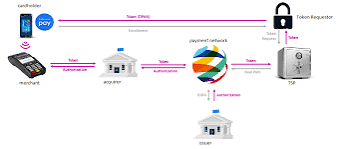IT IS YOUR MONEY
Stablecoins: Digital Cash for Global Payments
Stablecoins are digital currencies pegged to fiat assets like the U.S. dollar, offering the speed of crypto with price stability. Used for cross-border remittances, DeFi transactions, and institutional settlements, they bridge traditional and digital finance. With over $130 billion in circulation, major players like USDC, USDT, and emerging regulated issuers are reshaping how value moves globally. Their role in banking, trade, and everyday payments continues to expand rapidly.

What Are Stablecoins and How Do They Work?
Stablecoins are blockchain-based digital tokens designed to maintain a stable value, typically 1:1 with a fiat currency such as the U.S. dollar, euro, or gold. They combine the efficiency of cryptocurrencies—fast, borderless, 24/7 transactions—with the predictability of traditional money. There are three main types:
Fiat-collateralized (e.g., USDC, USDT): Backed by reserves of cash or short-term securities.
Crypto-collateralized (e.g., DAI): Over-collateralized by other digital assets.
Algorithmic (less common post-2022): Use code to manage supply and demand.
Fiat-backed stablecoins dominate the market due to their simplicity and trust in reserve transparency. Issuers like Circle (USDC) and Tether (USDT) publish regular attestations from auditors to verify backing.
Global Use Cases and Real-World Impact
Stablecoins are revolutionizing remittances. In countries like the Philippines and Nigeria, workers receive salaries in USDC via mobile wallets, avoiding high fees and delays from traditional wire services. A World Bank study found that stablecoin transfers reduce remittance costs from an average of 6.5% to under 1%.
In trade finance, JPMorgan’s JPM Coin enables instant settlement between corporate clients, reducing liquidity risk. In Latin America, merchants use USDC to hedge against inflation in volatile local currencies.
DeFi platforms rely on stablecoins as the primary medium of exchange. Over 80% of lending and trading volume on protocols like Aave and Uniswap occurs in stablecoins, minimizing exposure to crypto volatility.
Regulatory Developments and Trust Factors
Regulators are prioritizing stablecoin oversight. The U.S. Treasury has proposed frameworks requiring issuers to hold high-quality liquid assets and undergo regular audits. The EU’s MiCA regulation establishes strict rules for stablecoin operators, including capital requirements and redemption guarantees.
Circle, issuer of USDC, became a regulated U.S. money transmitter and holds reserves in cash and U.S. Treasuries. In contrast, past failures like TerraUSD highlight the risks of non-transparent or algorithmic models.
As regulatory clarity grows, institutional adoption accelerates. BlackRock, Fidelity, and HSBC now offer stablecoin services for clients, signaling mainstream acceptance
The Future of Digital Cash
Stablecoins are evolving into a core layer of global financial infrastructure. Central banks are exploring how CBDCs can coexist with private stablecoins, potentially using them as distribution vehicles.
With increasing compliance, transparency, and integration into banking systems, stablecoins are poised to become the default medium for digital transactions—both online and offline.
They are no longer just a crypto tool but a legitimate form of digital cash, trusted by individuals, businesses, and institutions worldwide.
To understand how stablecoins can streamline your payments, investments, or business operations, visit DigitalAssets.Foundation and speak with experts for a FREE consultation.

More News
© 2025
